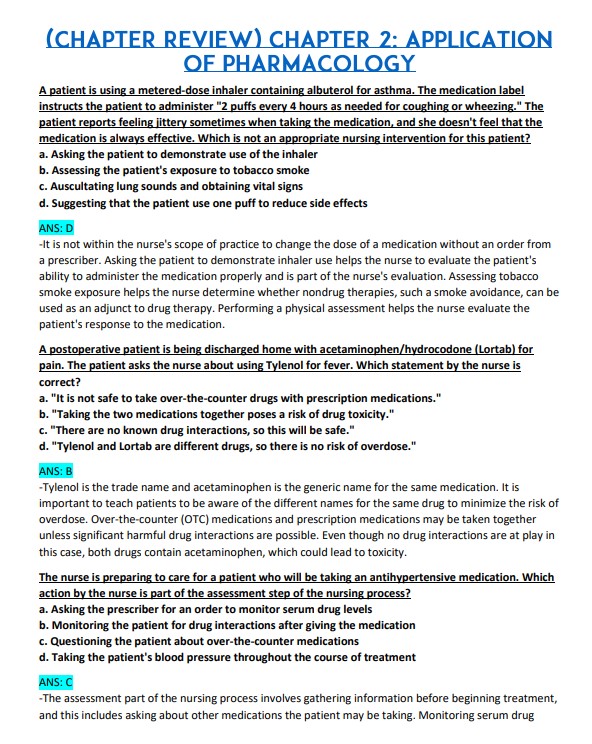Nursing Notes (Grade A+)
Summary:
This Nursing Notes focus on the application of pharmacology in nursing, highlighting scenarios where medication management and patient education play crucial roles. It details situations involving the use of medications such as albuterol for asthma, acetaminophen/hydrocodone for post-operative pain, antihypertensive drugs, acetaminophen for pain management, and insulin for diabetes.
The chapter also emphasizes the importance of correct drug administration, using a case where morphine is ordered for pain. It discusses the six rights of drug administration and their role in ensuring patient safety.
The chapter addresses the importance of patient feedback in medication efficacy, as shown in a case of a patient with recurring migraines. It covers risk factors for adverse reactions, with cases showing the increased risk in an elderly patient and a patient with kidney disease. A situation of a potential allergic reaction to intravenous penicillin is also presented to demonstrate appropriate nursing responses.
Finally, the chapter looks at various factors that can alter a patient’s physiological response to drugs, including the ability to swallow pills, age, genetic factors, gender, and height.
Excerpt:
Nursing Notes
Application of Pharmacology
A patient is using a metered-dose inhaler containing albuterol for asthma. The medication label instructs the patient to administer “2 puffs every 4 hours as needed for coughing or wheezing.” The patient reports feeling jittery sometimes when taking the medication, and she doesn’t feel that the medication is always effective.
Which is not an appropriate nursing intervention for this patient?
a. Asking the patient to demonstrate the use of the inhaler
b. Assessing the patient’s exposure to tobacco smoke
c. Auscultating lung sounds and obtaining vital signs
d. Suggesting that the patient use one puff to reduce side effects
ANS: D
-It is not within the nurse’s scope of practice to change the dose of a medication without an order from a prescriber. Asking the patient to demonstrate inhaler use helps the nurse to evaluate the patient’s ability to administer the medication properly and is part of the nurse’s evaluation. Assessing tobacco smoke exposure helps the nurse determine whether nondrug therapies, such as smoke avoidance, can be used as an adjunct to drug therapy. Performing a physical assessment helps the nurse evaluate the patient’s response to the medication.


Reviews